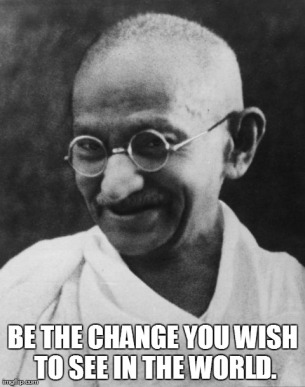
Photo Credit: Drew via flickr
Technology tools have brought new elements to biography study. Teachers are now utilizing a variety of presentation tools, online timelines, and talking avatars to enhance biography units. No longer limited to a typed report, biographies have now evolved into multimedia classroom presentations.
An interesting addition to your biography unit is the use of a meme. Allow students to create a meme with the historical figure and a brief quote. Using this simple graphic can foster essential presentation skills that go beyond reading from a notecard or word for word from a PowerPoint presentation. Students can become well versed presenters by learning the importance of being knowledgeable about the topic and using visuals as a supplement to the presentation.
Student created biographies tend to provide us with information such as dates, names of family members, and notable accomplishments. Providing simple facts is an adequate starting point, but allowing them to delve into research from a different angle can provide a fresh perspective, and reveal meaningful information. Beginning with a powerful quote can also serve as an ideal launching point for deeper questions and discussions.
Here is your quick start guide to implementing memes in your classroom:
Do You Know Your Memes? outlines some simple meme building tips for teachers and students.
Create your memes using simple meme generating sites such as quick meme or imgflip. But educators use caution. Previewing these sites is a must to make certain that cataloged memes are suitable for students. Ensure students stay in the meme generating section of the website and do not allow students to search for memes using a search engine. Many memes are classroom appropriate and many are not. As with all classroom technology tools, good supervision is essential.




